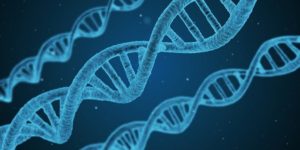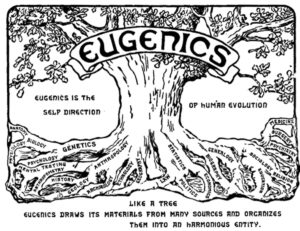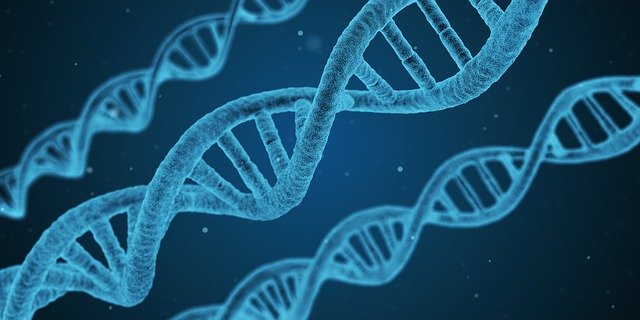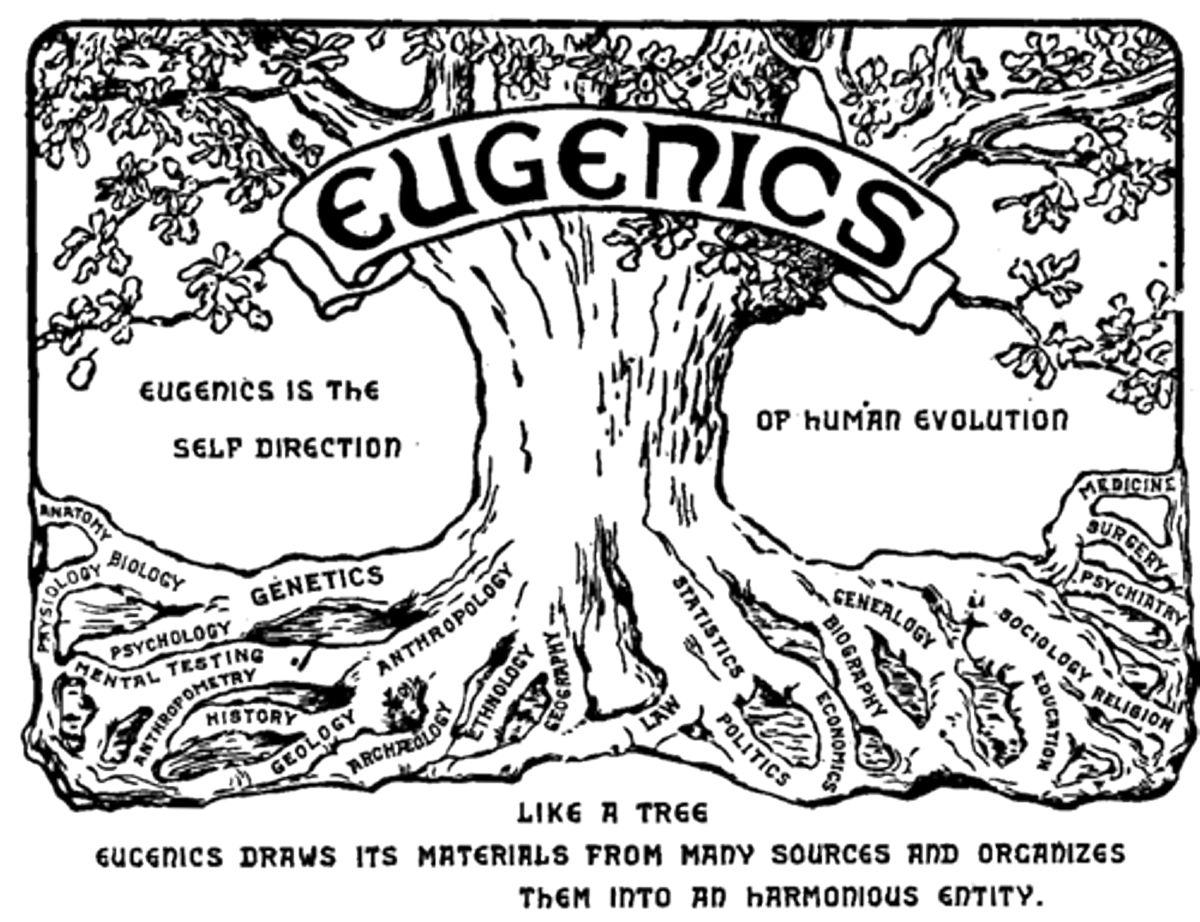A “free-market” approach to the genetic development of children may result in a homogenising. Parents may be inclined to choose according to models accepted by society. In this case, improving technologies “will grant racism and homophobia an unprecedented efficacy.” One concern about the obligation to produce the best child in a particular society is that social norms may be discriminatory, so that in the end, for example, most children will be boys, extremists and heterosexuals. The sequencing of the human genome can help us in human evolution, to understand diseases for direct appropriate treatment, identify mutations that cause disease, and correct them.
DOI: 10.13140/RG.2.2.23389.67044
Tag: eugenics
Evolution and Ethics of Eugenics
 As eugenics is defined, it is very difficult to make a clear distinction between science (medicine, genetic engineering) and eugenics as a included field. And to set a line over which genetic engineering should not go further, according to moral, legal and religious norms. If we accept the help of genetics in finding ways to fight cancer, diabetes, or HIV, we also accept positive eugenics as they are defined now. And if we accept genetic screening, and interventions on the unborn baby, or abortion, we also implicitly accept negative eugenics. In addition, at government level, although eugenics are officially denied, it has been legalized in many countries until recently, and is still accepted and legalized, albeit in subtle forms, even these days. The section Introduction defines the term and classification modes. The section History of Eugenics follows eugenics from the ancient period, the introduction of eugenics by Francis Galton, the practice of eugenics as a state policy in various countries, and the present eugenics (liberal eugenics). I then analyze various issues raised by the Ethics of Liberal Eugenics, and I have developed a special section for the Future of Eugenics, focusing on the human genome project. Finally, in the Conclusions, I express my personal views on the current practice of eugenics.
As eugenics is defined, it is very difficult to make a clear distinction between science (medicine, genetic engineering) and eugenics as a included field. And to set a line over which genetic engineering should not go further, according to moral, legal and religious norms. If we accept the help of genetics in finding ways to fight cancer, diabetes, or HIV, we also accept positive eugenics as they are defined now. And if we accept genetic screening, and interventions on the unborn baby, or abortion, we also implicitly accept negative eugenics. In addition, at government level, although eugenics are officially denied, it has been legalized in many countries until recently, and is still accepted and legalized, albeit in subtle forms, even these days. The section Introduction defines the term and classification modes. The section History of Eugenics follows eugenics from the ancient period, the introduction of eugenics by Francis Galton, the practice of eugenics as a state policy in various countries, and the present eugenics (liberal eugenics). I then analyze various issues raised by the Ethics of Liberal Eugenics, and I have developed a special section for the Future of Eugenics, focusing on the human genome project. Finally, in the Conclusions, I express my personal views on the current practice of eugenics.
CONTENTS:
Abstract
Introduction
New Eugenics
The Future of Eugenics
Conclusions
Bibliography
DOI: 10.13140/RG.2.2.28662.45120
MultiMedia Publishing EPUB (ISBN 978-606-033-215-2), Kindle (ISBN 978-606-033-214-5), PDF (ISBN 978-606-033-216-9) https://www.telework.ro/en/e-books/evolution-and-ethics-of-eugenics/
The new (liberal) eugenics
 Despite the Nazi horrors, in 1953 the new eugenics was founded, when Watson and Crick postulated the double helix of DNA as the basis of chemical heredity. In 1961, scientists have deciphered the genetic code of DNA, laying the groundwork for code manipulation and the potential building of new life forms. After thirty years from the discovery of the DNA structure, the experimenters began to carry out the first clinical studies of human somatic cell therapy.
Despite the Nazi horrors, in 1953 the new eugenics was founded, when Watson and Crick postulated the double helix of DNA as the basis of chemical heredity. In 1961, scientists have deciphered the genetic code of DNA, laying the groundwork for code manipulation and the potential building of new life forms. After thirty years from the discovery of the DNA structure, the experimenters began to carry out the first clinical studies of human somatic cell therapy.
The practice of prenatal genetic tests identifies genes or unwanted genetic markers. Parents can choose to continue pregnancy or give up the fetus. Once the preimplantation genetic diagnosis occurs, potential parents can choose to use in vitro fertilization and then test early embryonic cells to identify embryos with genes they prefer or avoid. Because of concerns about eugenics, genetic counseling is based on a “non-directive” policy to ensure respect for reproductive autonomy. The argument for this counseling service is that we should balance parental autonomy with child’s autonomy in the future. Specialists have not yet given a clear answer to the question of whether these practices should be considered eugenic practices, or if they are moral practices.
DOI: 10.13140/RG.2.2.28777.95849
Eugenics
 The main concern of the first eugenists, such as Karl Pearson and Walter Weldon of University College London , were the perceived intelligence factors considered to be correlated with the social class. In his speech “Darwinism, Medical Progress and Eugenics”, Karl Pearson equates eugenics with a field of medicine. Some areas of medicine that are not commonly recognized as eugenic affect the human genes background. These include sterilization and surgical techniques that allow the functioning of reproductive organs. Even medicines that do not directly involve reproductive organs can alter the gene pool. Genetic abnormalities in such individuals are thus duplicated, modifying the genetic background. On this basis, such practices are widely accepted as more radical eugenic processes.
The main concern of the first eugenists, such as Karl Pearson and Walter Weldon of University College London , were the perceived intelligence factors considered to be correlated with the social class. In his speech “Darwinism, Medical Progress and Eugenics”, Karl Pearson equates eugenics with a field of medicine. Some areas of medicine that are not commonly recognized as eugenic affect the human genes background. These include sterilization and surgical techniques that allow the functioning of reproductive organs. Even medicines that do not directly involve reproductive organs can alter the gene pool. Genetic abnormalities in such individuals are thus duplicated, modifying the genetic background. On this basis, such practices are widely accepted as more radical eugenic processes.
DOI: 10.13140/RG.2.2.29167.28326/1

